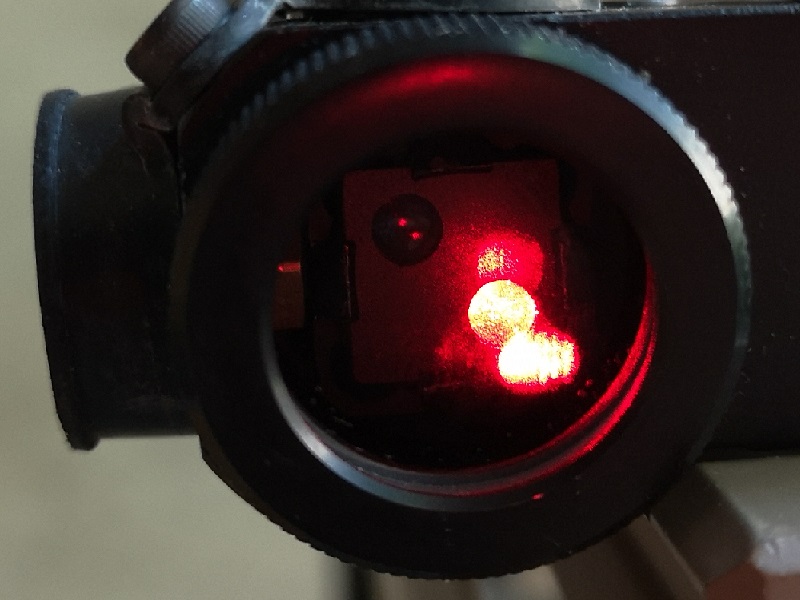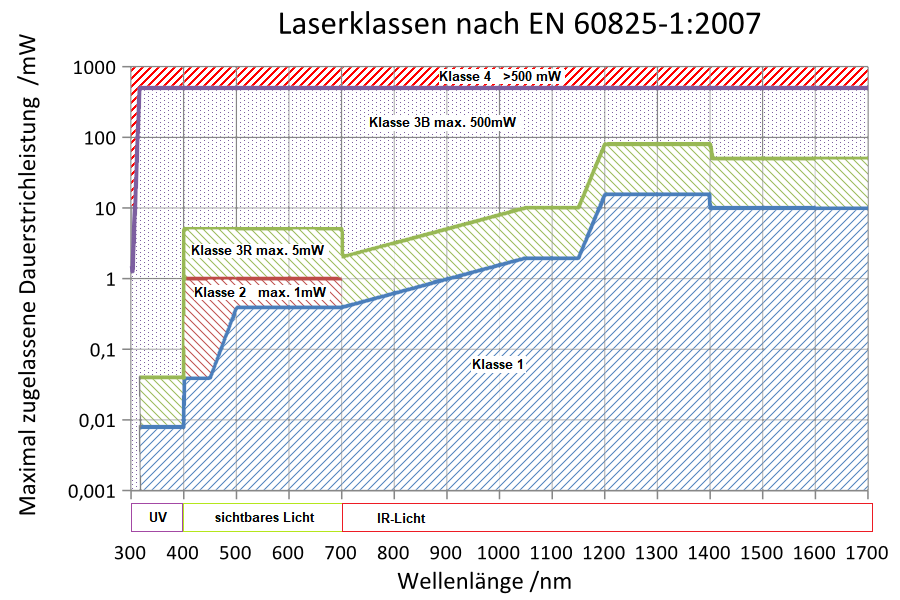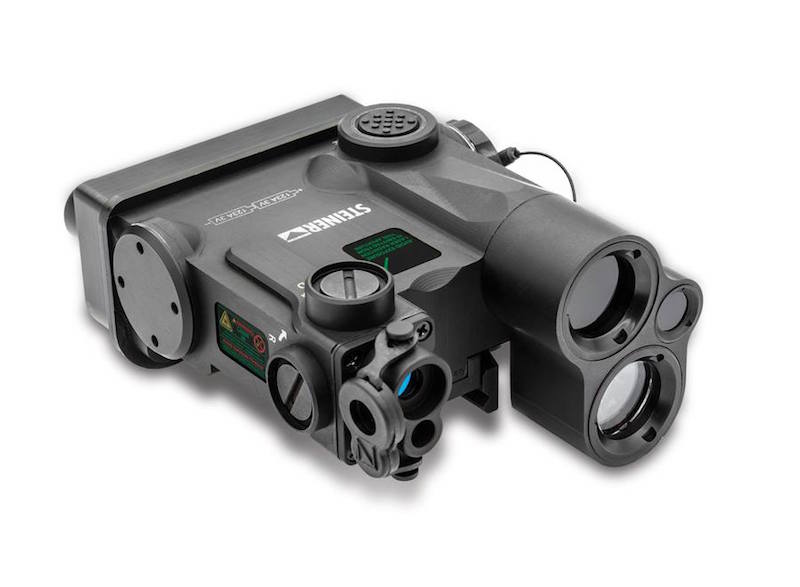Hol Dir den wöchentlichen SPARTANAT-Newsletter.
Dein Bonus: das gratis E-Book von SPARTANAT.

BASICS: Kenne deine Laserklasse
Laser, faszinierend, unterhaltsam und gefährlich zugleich, all das, was ein Mann braucht, um Spaß zu haben. Heute konzentrieren wir uns jedoch auf die Grundlagen der Laserklassen gemäß dem Standard EN 60825-1 in Europa.
Laser, faszinierend, unterhaltsam und gefährlich zu geich, also alles was man(n) braucht um Spaß zu haben. Damit aber keiner Verletzt wird beschäftigen wir uns heute mal mit dem Grundlagen der Laserklassen.
 Laser werden in Europa nach der Norm EN 60825-1 klassifiziert. Die Amerikaner verwenden einen andere Norm, aber inhaltlich sind sie fast gleich. Laser werden prinzipiell in fünf verschiedene Klassen unterschieden. Im Bereich des sichtbaren Lichts gibt es eine zusätzliche Klasse 2, die sich in den nicht sichtbaren Bereichen nicht findet. Aber was bedeuten die Klassen jetzt?
Laser werden in Europa nach der Norm EN 60825-1 klassifiziert. Die Amerikaner verwenden einen andere Norm, aber inhaltlich sind sie fast gleich. Laser werden prinzipiell in fünf verschiedene Klassen unterschieden. Im Bereich des sichtbaren Lichts gibt es eine zusätzliche Klasse 2, die sich in den nicht sichtbaren Bereichen nicht findet. Aber was bedeuten die Klassen jetzt?
- Klasse 1: Sichere Lasergeräte. Diese sind entweder sicher, weil ihre Leistung so gering
ist, oder weil sie ein Schutzgehäuse besitzen, das die Laserstrahlung im bestimmungsgemäßen
Normalbetrieb nach außen hin völlig abschirmt. Laserprodukte der Klasse 1 haben daher keinen Gefahrenbereich. Theoretisch könnt ihr sogar die ganze Zeit in den Strahl schauen, aber empfehlen tun wir das nicht. - Klasse 2 (früher Klasse 3A): Der Schutz der Augen wird bei niedrigen Leistungen durch natürliche Abwendreaktionen (z. B. Lidschlussreflex) gewährleistet. Für Punktquellen, wie sie die meisten Laserpointer darstellen, beträgt die maximal zulässige Leistung bei Klasse 2 gleich 1 mW. Laser der Klasse 2 sind sicher, solange die natürliche Abwendreaktion nicht unterdrückt wird (absichtlich in den Strahl starren) oder durch Medikamente, Drogen etc. beeinträchtigt ist. Laserprodukte der Klasse 2 haben daher keinen Gefahrenbereich.

- Klasse 3R (früher Klasse 3B): Die Klasse 3R könnte im Bezug auf das Risiko für Augenschäden als Übergang zwischen der (praktisch sicheren) Klasse 2 und der „gefährlichen“ Klasse 3B gesehen werden. Eine reelle Schädigungswahrscheinlichkeit ergibt sich nur bei Bestrahlung von mehreren Sekunden Dauer, wie auch entsprechende Studien und Unfallberichte zeigen. Dennoch kann für Klasse 3R-Produkte ein Gefahrenbereich festgelegt werden.
Bei manchen gepulsten Systemen ist ein Risiko auch für kurzzeitige Bestrahlung nicht auszuschließen. Wichtig ist bei Klasse 3R-Lasern, dass diese nur Personen verwenden, die über das Restrisiko unterwiesen wurden. Das Tragen von Schutzbrillen ist nur dann nicht notwendig, wenn man davon ausgehen kann, dass es zu keiner Exposition der Augen innerhalb des Gefahrenbereiches kommt. - Klasse 3B: Ab hier wird es gefährlich. Innerhalb des Gefahrenbereiches besteht Gefahr für das Auge und in Ausnahmefällen für die Haut. Eine Augenschädigung kann bereits nach sehr kurzer Bestrahlungsdauer eintreten, gilt auch für nicht-sichtbare Strahlung. Im Allgemeinen besteht keine Gefahr für die Haut oder für das Auge bei der Betrachtung einer diffusen Reflexion.

- Klasse 4: Die wirklich gefährlichen Laser. Gilt für Lasergeräte mit Leistungen über 0,5 W. Innerhalb der jeweiligen Gefahrenbereiche besteht Gefahr für Auge und Haut, wobei nicht nur der direkte Laserstrahl, sondern auch diffuse Streustrahlung ein Gefahrenpotential darstellt und einen eigenen Gefahrenbereich aufweist. Sollte der Laserstrahl auf entzündliche Materialien treffen, besteht sogar Brandgefahr!
 Hier nochmal die Laserklassen Gefahren in einer Tabelle zusammengestellt. Kurz gesagt, umso höher die Laserklasse umso gefährlicher wird es.
Hier nochmal die Laserklassen Gefahren in einer Tabelle zusammengestellt. Kurz gesagt, umso höher die Laserklasse umso gefährlicher wird es.
Die meisten militärischen Laserzielhilfen wie AN/PEQ 15 usw. fallen in die Laserklassen 2 bis 3B. Bii Lasern im Infrarotbereich ist die Einteilung in Klasse von der Wellenlänge abhängig. Das ergibt aus der in der Norm hinterlegten Berechnung. Die für uns relevanten IR-Laser sind im Bereich um die 800 nm zu finden und sind bei einer Leistung über 0,5 Milliwatt bereits als Klasse 3R einzustufen. Die Benutzer solcher Laser müssen – wie schon geschrieben – über das Restrisiko unterwiesen werden.
Also passt auf, wenn ihr euch eine Laserbox oder einen Laserpointer zu legen wollt, denn wer einmal blind ist, bleibt es auch. Und leuchtet bitte keine Flugzeuge oder Hubschrauber an, das kann gravierende Folgen haben.
Wir haben für Euch die neue SPARTANAT Kategorie BASICS eingeführt. Mit dieser stellen wir Euch die Grundlagen vor, von denen ihr immer schon wissen wolltet, wie sie funktionieren.
SPARTANAT ist das Online-Magazin für Military News, Tactical Life, Gear & Reviews.
Schickt uns eure News: [email protected]
Werbung
Hol Dir den wöchentlichen SPARTANAT-Newsletter.
Dein Bonus: das gratis E-Book von SPARTANAT.


